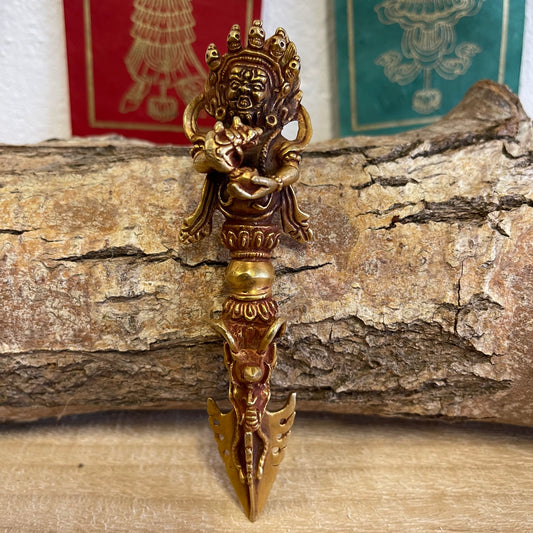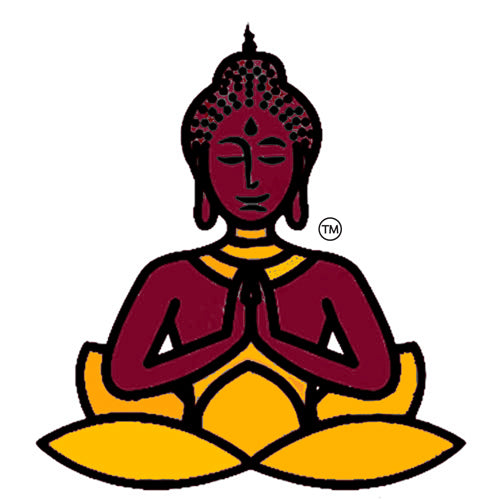Kategorie: Ritual Phurba's & Kartika
A phurba is a ritual dagger with a distinctive three-sided blade used in Tibetan Buddhist practices, particularly in the context of Vajrayana Buddhism. Also known as a "kila" or "phurpa," this sacred tool holds significant symbolic importance in various ceremonies.
The word "phurba" is derived from the Sanskrit term "kila," meaning peg or nail. The dagger typically features a triangular blade, representing the ability to overcome obstacles in the three realms of existence: desire, form, and formlessness. The handle often bears three faces, embodying the wrathful or peaceful aspects of deities associated with the ritual.
The phurba serves a dual purpose as both a dagger and a peg. The pointed end symbolically pierces and transfixes negative forces, while the other end, often flat or featuring a peg, signifies stability and the anchoring of spiritual energy. This dual nature of the phurba emphasizes its role in the subjugation of obstacles and the establishment of a purified, protected ritual space.
Used in Tibetan Buddhist rituals, the phurba plays a crucial role in consecrating spaces, purifying environments, and safeguarding against malevolent forces. It is also employed in tantric practices to represent the transformation of negative energies into enlightened wisdom. The ritual use of the phurba aligns with the broader Vajrayana goal of achieving enlightenment and overcoming hindrances on the spiritual path.
The symbolism associated with the phurba is profound, reflecting its role as a potent tool for spiritual transformation. Its three-sided design, multiple faces, and dual functionality convey a complex narrative of overcoming obstacles and harnessing spiritual power. Overall, the phurba stands as an emblem of strength, purification, and protection within the rich tapestry of Tibetan Buddhist traditions.
-
Fine Metal Phurba - Bhairab
Normaler Preis €21,95 EURNormaler Preis -
Fine Metal Kartika Small
Normaler Preis €14,95 EURNormaler Preis -
 Ausverkauft
AusverkauftMahakala Gold-plated Phurba 12 cm
Normaler Preis €53,95 EURNormaler Preis -
Fine Metal Phurba | Small
Normaler Preis €9,95 EURNormaler Preis




